Photographed using a specialized microscope whose viewing stage is chilled to -170C, scientists in Maryland are showing a whole new side to what's caught on the tip of our tongues.
Using a low-temperature scanning electron microscope, researchers at the Beltsville Agricultural Research Center have captured an astonishing new view on naturally-occurring snowflakes.
Shipping in the samples collected from snow banks or during fresh snow fall from around the country, the researchers study their composition for their effects on our ecosystem.
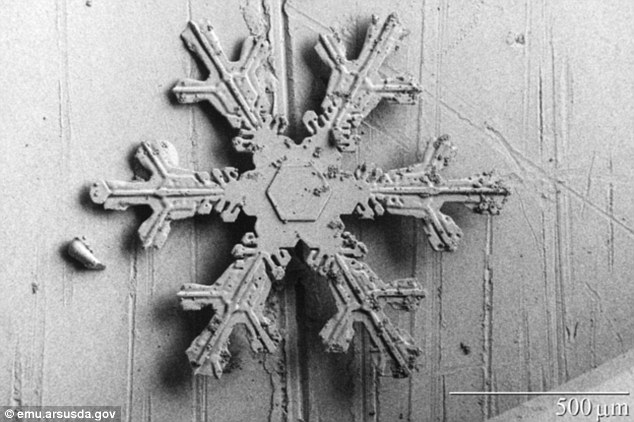
© emu.arsusda.govThese unique images captured with a low-temperature scanning electronic microscope capture show a side to snowflakes rarely seen before
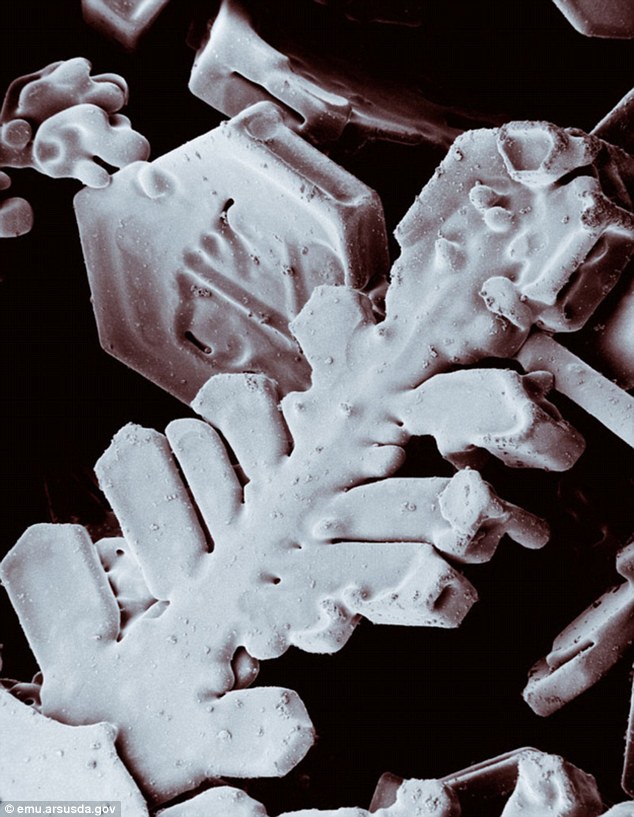
© emu.arsusda.govThis image, shown with a tint of red, is what is called a psedo-coloured snowflake whose colour is computer generated and used commonly to highlight different parts of the flake
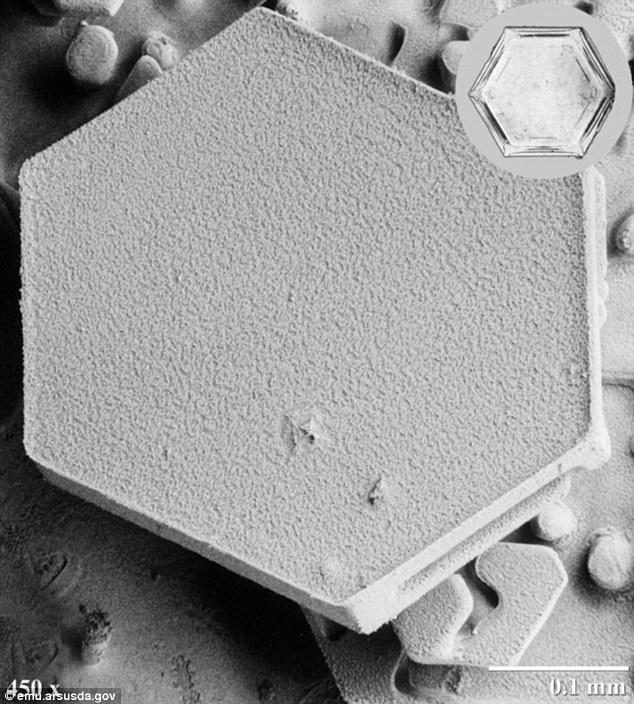
© emu.arsusda.govMagnifying this hexagon flake 450 times its size shows a detailed, frosty surface
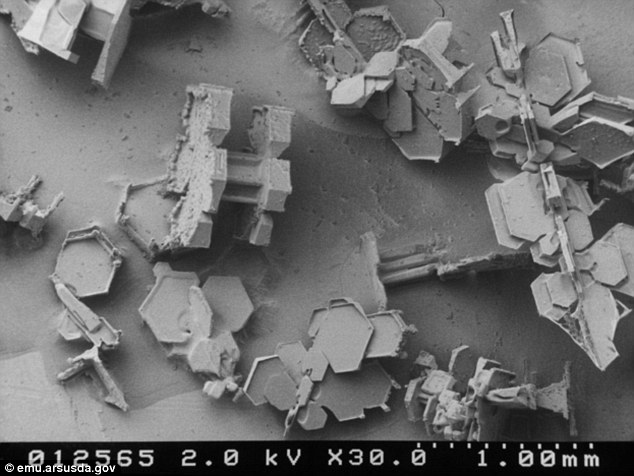
The magnifications, while stunning, are used to help scientists better assess the nation's water supply and how to protect from flooding
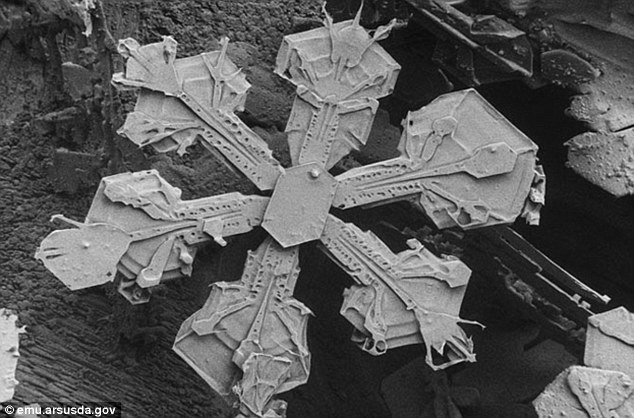
© emu.arsusda.gov
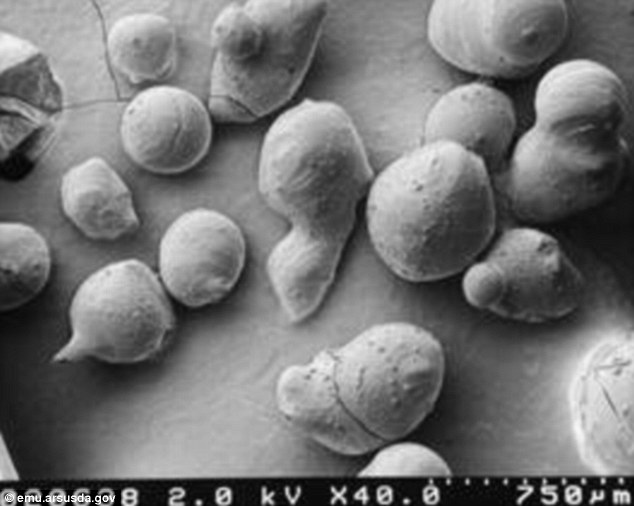
Compare and contrast: this is what artificial man-made snow looks like up close. Hasn't got anything on the intelligence of the Living System.
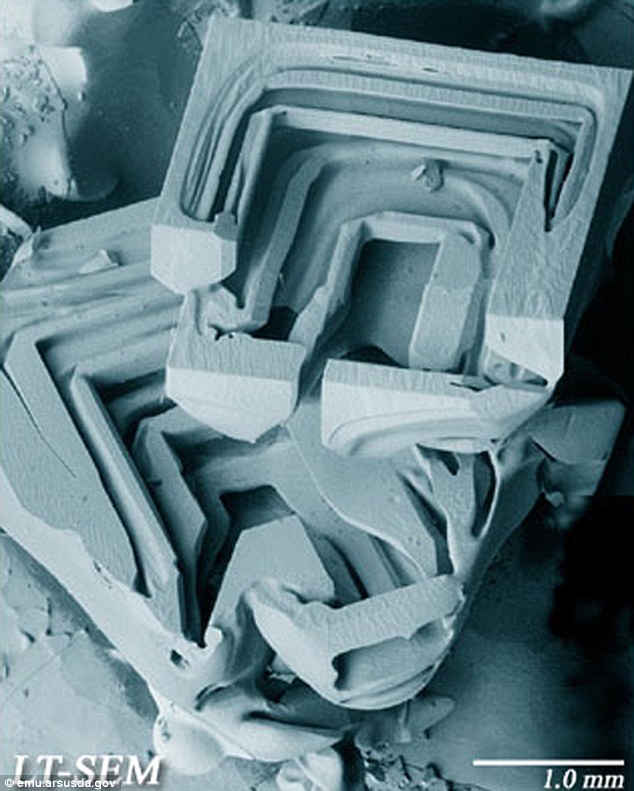
© emu.arsusda.gov
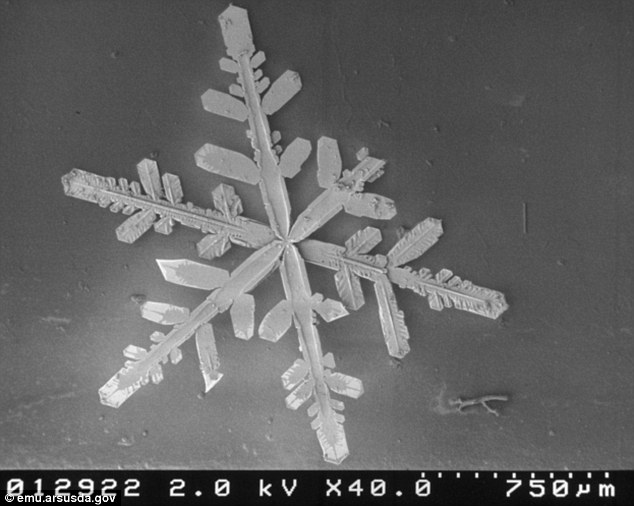
© emu.arsusda.govThe snowflakes are either brushed onto copper flakes held by researchers or allowed to fall naturally on them
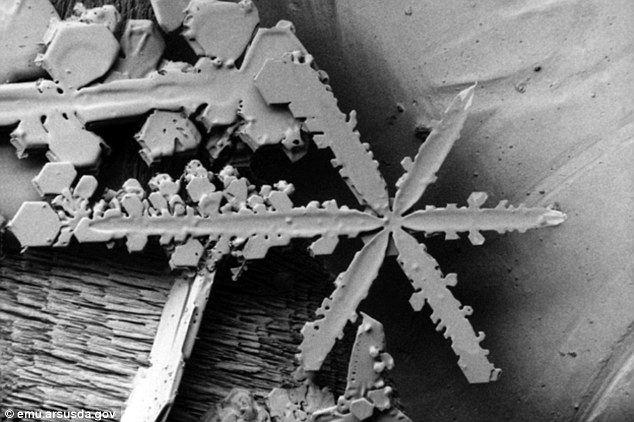
© emu.arsusda.govOnce the flakes are captured they are right away dipped in liquid nitrogen, cooling them down to -196C
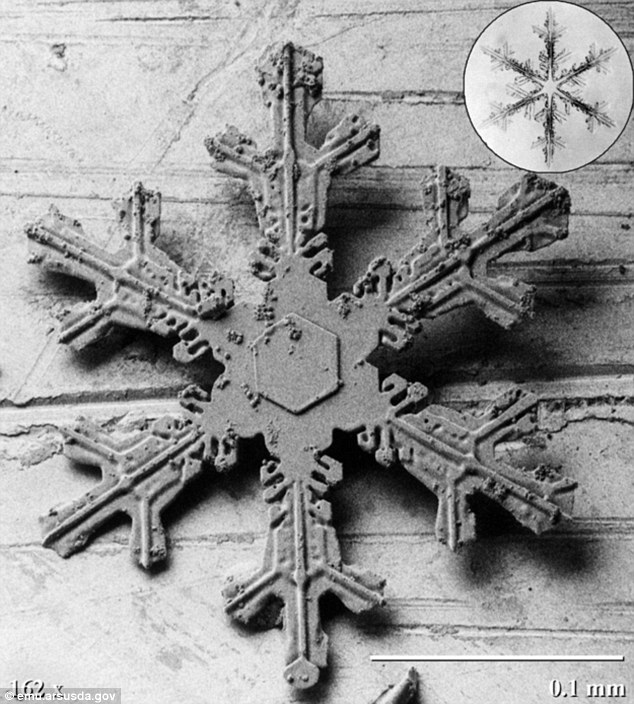
© emu.arsusda.gov
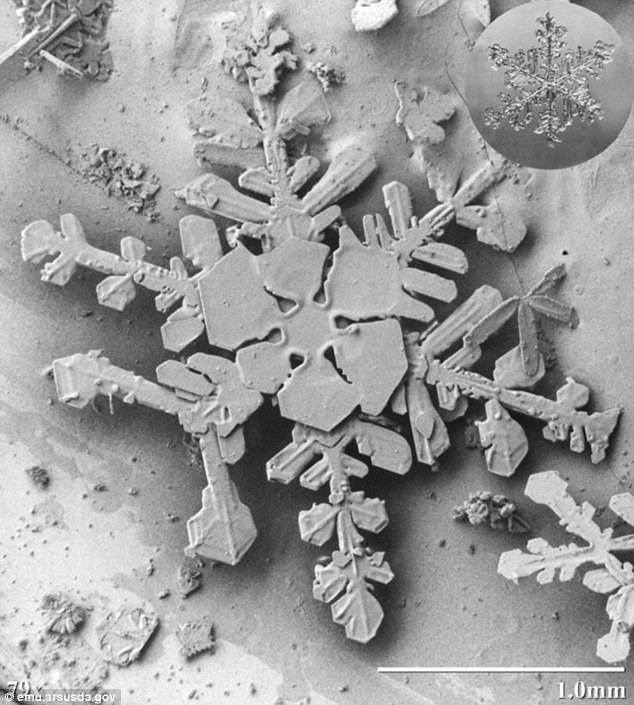
A glass-like snowflake in the upper right-hand corner shows the center flake before pulling in to a view 79 times its size
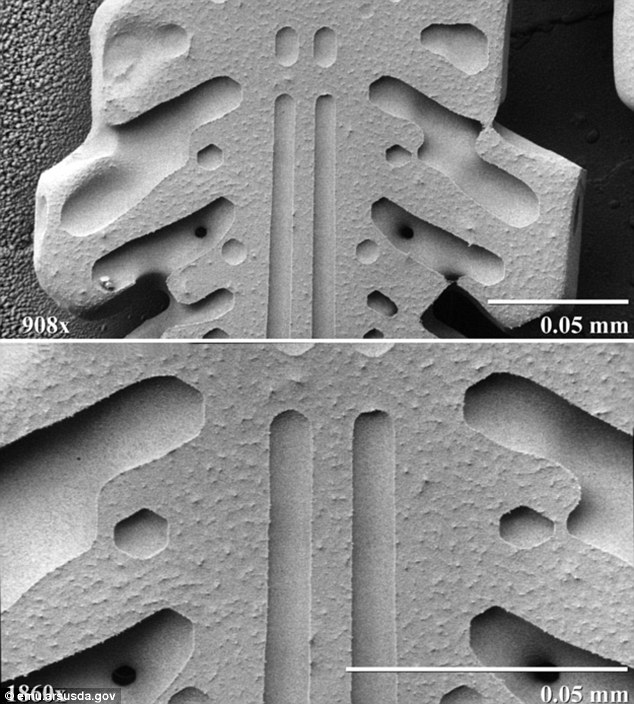
Shown at the top, a flake is seen magnified 908 times while at the bottom the same area is seen magnified 1,860 times
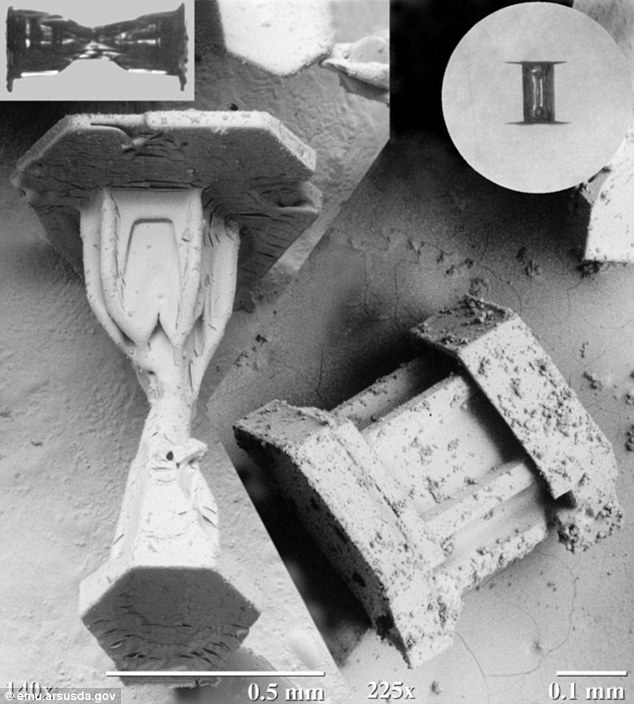
Random pattern? Or clear evidence for intelligent design?











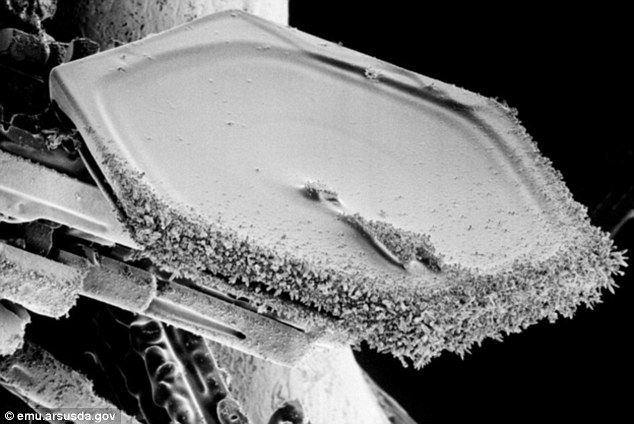

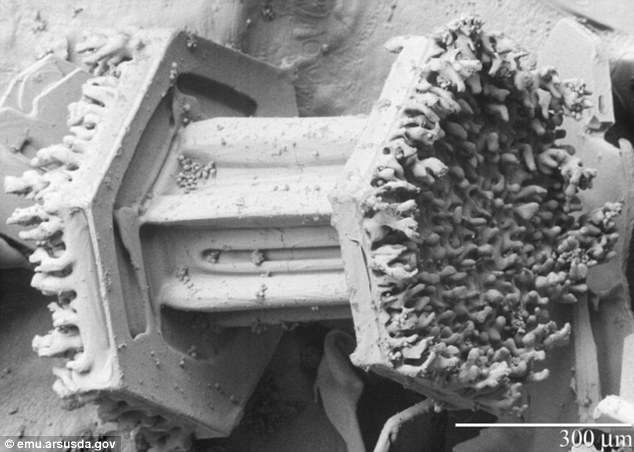
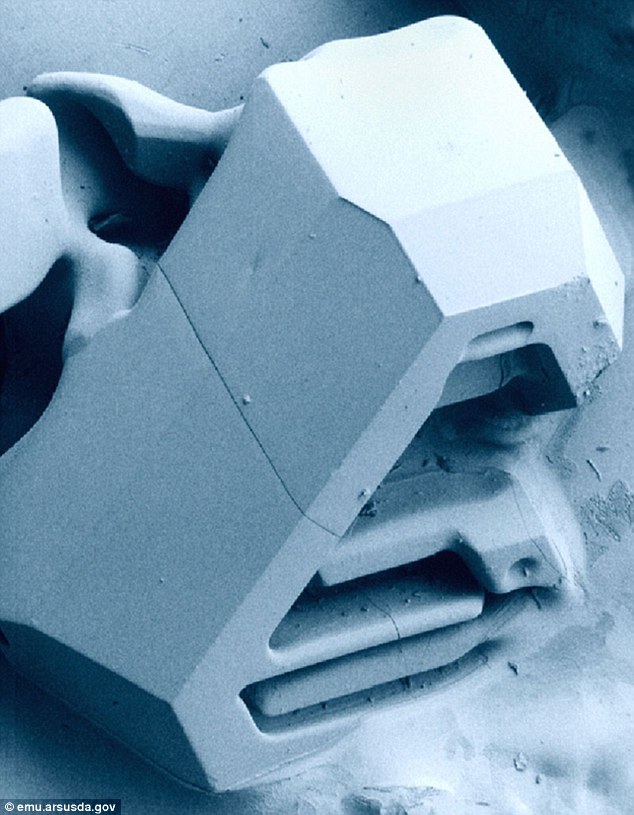




So they will use one imagined explanation or another and paint is as CHANCE... although the scientists themselves using the same explanation that they give, cannot create what the living, super intelligent designer is creating through nature.